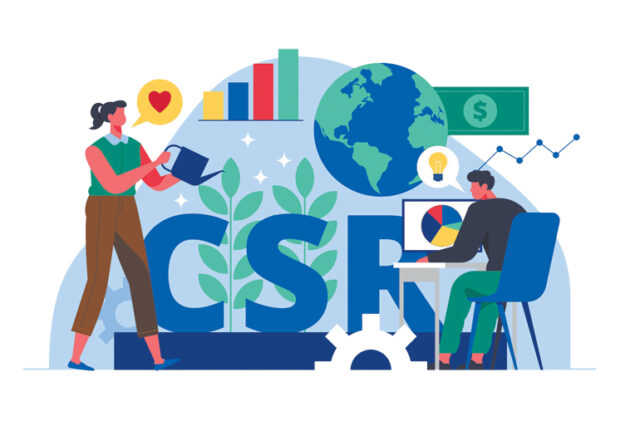Empowering present and future generations through social programs
Social programs are the most concrete way businesses or governments can give back to their customers or taxpayers. Outreaches to schools, free checkups in barangays, and providing essential goods are some examples of projects that have provided immediate relief to Filipinos and, at times, have significantly contributed to improving their overall well-being and quality of life, especially in times of crisis such as the coronavirus pandemic.
As the Philippines allocates resources towards social policies, they not only uplift the present welfare of Filipinos but also foster a more prosperous and equitable society for future generations. Currently, the Department of Social Welfare and Development (DSWD) spearheads these initiatives, seeking to address the immediate needs of vulnerable populations while also laying the groundwork for sustained growth and development.
The DSWD’s flagship program, the Pantawid Pamilyang Pilipino Program (4Ps), is the national poverty reduction initiative aiming to provide financial assistance to the poorest families in the country. The 4Ps has already helped more than 56,000 Filipino households amounting to more than P177 million in cash grants as of Jan. 31.
The department also implements the Supplementary Feeding Program on child development centers in public schools. Under the program, children enrolled in public elementary and secondary schools are eligible to receive two nutritious meals a day. The DSWD receives funding for this program through Republic Act (RA) 11037 or the Masustansyang Pagkain Para sa Batang Filipino Act.
Meanwhile, President Ferdinand “Bongbong” R. Marcos, Jr.’s Pambansang Pabahay Para sa Pilipino Program (4PH), headed by the Department of Human Settlements and Urban Development, aims to construct over six million houses benefitting nearly 30 million Filipinos. All Filipinos can avail of housing assistance especially those coming from the urban poor, informal settlers, minimum wage earners, and overseas Filipino workers.
Education on all levels, while there may be miscellaneous fees, is also free in the country, granting every Filipino the right to learn. RA 9155, or the “Governance of Basic Education Act of 2001,” provides children with free and compulsory elementary and high school educations while RA 10931, or the “Universal Access to Quality Tertiary Education Act,” makes college education accessible to all Filipinos.
Likewise, the Department of Health implements diverse public health programs targeting infectious diseases, non-communicable diseases (NCDs), and emerging health issues like injuries, mental health, and substance abuse. Initiatives include immunization, disease prevention, and control programs focusing on HIV/AIDS, tuberculosis, malaria, lifestyle diseases, and essential NCDs.
While the present objectives of these social programs may be to alleviate hunger and poverty, and grant access to healthcare, housing and education, investments in public welfare lay the foundation for a future generation characterized by the growth of prosperity and equity.
Research from the Center on Budget and Priority Policies (CBPP) indicates that higher family income correlates with positive outcomes in children’s education, behavior, and health. Consequently, the researchers discovered that programs offering more generous income assistance resulted in improved academic performance among young children in school.
Additionally, providing food stamps and alleviating hunger in disadvantaged families can lead to children’s better health outcomes as adults. Women who had access to food stamps during their early childhood also reported enhanced “economic self-sufficiency,” as evidenced by improved indicators such as employment status, income levels, poverty status, high school graduation rates, and participation in programs.
The CBPP also links housing-related problems that housing assistance addresses to a range of adverse outcomes with long-term consequences showing the importance of shelter to future generations. The research shows that children who are homeless and often relocate are more likely to face academic challenges such as dropping out, grade repetition, or poor test performance while children with housing assistance achieved better scores on tests and were far more likely to graduate.
“Assistance programs… not only help low-income families get by today but also help children thrive in the long run by improving their health status, educational success, and future work outcomes,” the CBPP concluded based on their findings.
Furthermore, according to a study from Harvard’s Quarterly Journal of Economics that examined over 130 policies from the United States, social programs spanning from health and education targeted at children have yielded the highest return on investments in youth of all ages.
By calculating the benefits of programs to citizens and the cost of public welfare to the government, researchers determined that social programs, when done correctly, even turned a profit for the government and its citizens when cost and benefits were factored in.
Moreover, the study identified that social policies like scholarships, free healthcare, and family-oriented activities not only delivered immediate benefits to their recipients but also generated long-term gains for governments through increased tax revenues.
Businesses, through their corporate social responsibilities (CSR), can benefit from social programs as well. Based on data from Harvard Business School, 77% of customers are more motivated to purchase from companies with philanthropic commitments while 95% of employees are more inspired to work at companies “with a strong sense of purpose.” These initiatives enhance brand reputation and employee engagement, contributing to long-term success.
Meanwhile, the American Marketing Association (AMA) suggests that CSRs can also impact brand sales. Results from the AMA show that “Corrective” and “Compensating” CSR efforts provide a boost to the sales of participating brands dependent on the consumers’ perception of sincerity.
“The moderating effect of brand CSR reputation also shows a similar pattern, attenuating the positive effects for both Corrective and Compensating CSR, and improving purchase intention outcomes for Cultivating CSR. These effects were driven in part by subjects’ inferences regarding the sincerity of the brand’s motives behind the CSR initiatives,” the AMA said in their Journal of Marketing.
Concerted efforts by the government or by businesses towards social welfare in the Philippines pave the way for an empowered generation, where every Filipino has the opportunity to thrive. By prioritizing investments in social programs, the nation sets a precedent for sustainable development and inclusive growth, ensuring a prosperous and equitable society for generations to come. — Jomarc Angelo M. Corpuz











